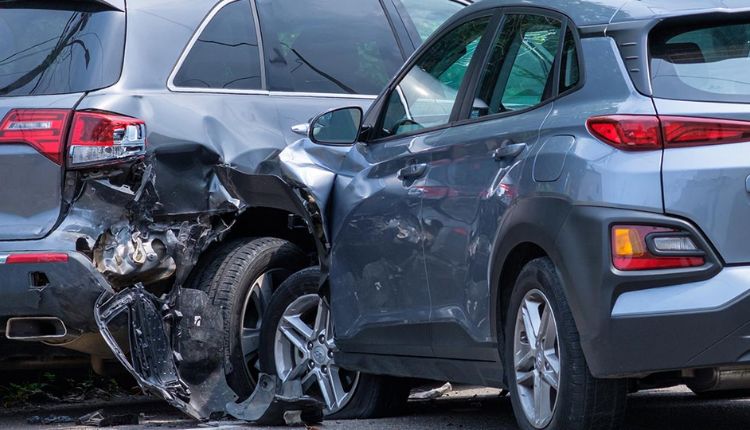Rear-end collisions at traffic lights in Sarasota, Florida, represent a significant portion of local traffic accidents and property damage claims. According to the Florida Department of Highway Safety and Motor Vehicles, rear-end collisions account for approximately 30% of all traffic crashes in Florida, with intersection-related incidents being particularly common in high-traffic areas like Sarasota.
The National Highway Traffic Safety Administration reports that rear-end collisions result in over 2.5 million accidents annually across the United States, causing approximately 33,000 injuries per year. Understanding how to establish fault in these incidents is crucial for pursuing insurance claims and potential legal action.
And rear-end collisions at traffic lights are one of the most common occurrences on the road. Being at fault in an accident can often lead to arguments and disputes, so knowing how they work is important. A Sarasota car accident lawyer can help you establish liability and pursue fair compensation. Figuring out who is to blame can be complicated, but there are standardized ways for you to collect proof and form your case.
Understanding Rear-End Collisions
Accidents of this kind usually occur when a vehicle cannot stop in time and collides with the car ahead. Liability is not entirely clear-cut, and although many may immediately assume that the rear driver is at fault, multiple factors can affect how the accident was caused or who was at fault. These incidents are caused by a combination of mechanical failures in the truck, the condition of the road, and the behavior of other drivers on the road.
Gathering Evidence
Now, for a fault to be established or proven, it has to be demonstrated that the other party acted wrongly in some way. Images of the scene may be worth looking into. They record the location of vehicles, the position of road markings, and any skid marks. Such particulars will be essential in reconstructing the accident from the outset, providing a clearer image of the moments leading up to the incident.
Witnesses as well will be similar. Neutral bystanders can report what just happened. Their point of view may help shed some light on what the drivers in the crash simply missed. At the scene, it can be helpful to get contact information from the people who witnessed your accident.
Analyzing Traffic Light Signals
A main factor in these accidents is the traffic light signals. According to the National Highway Traffic Safety Administration, analyzing traffic light timing and vehicle behavior is essential in determining fault at intersections. By looking at how long the lights were red, you can tell if a driver tried to stop or just ran a red light. Traffic camera footage to help fracture the analysis may provide an objective view of the moments before the conflict.
Assessing Vehicle Damage
Damage on the vehicles involved, as well as where that damage occurred, can be used to establish liability. Depending on what the insurance companies and auto repair shops have seen in the past, there are certain types of damage associated with rear-end collisions. Such patterns can then be examined by mechanics and experts to determine the dynamics of the impact. Through this analysis, it can be determined whether the lead vehicle stopped suddenly or whether the rear driver was speeding.
Examining Road Conditions
Another thing to take into consideration is the road conditions at the time of the accident. Slippery, wet, or icy roads can decrease traction, which can increase stopping distances. In addition to that, if it is a cloudy day, a driver can not react quickly enough due to poor visibility. You may also document these conditions as background for the crash.
Considering Driver Behavior
One of the most important contributors to these incidents is driver behavior. Distractedness, tiredness, or driving under the influence will cause slower responses. These factors can be revealed from phone records or sobriety tests, etc. Reconstructing driver behavior ahead of the collision is an important consideration when determining liability.
Insurance and Legal Considerations
Determining fault is a large part of how insurance companies operate. They perform their investigations, examining the evidence as well as the statements of all parties concerned. The findings affect the settlement of claims and the possibility of litigation. All parties must be upfront and provide all information possible to their insurers.
Seeking Legal Assistance
If you are uncertain about your status, consider speaking to a traffic accident attorney. Traffic accident attorneys can assist in gathering evidence and negotiating with insurance companies. They can also represent you in court to fight for a fair resolution.
Preventing Future Incidents
Identifying blame is one of the things that is most wanted, but preventing getting into a situation like a collision again also comes close. Motorists should keep a safe distance behind other vehicles and be wary of traffic signals. Frequent maintenance can help avoid mechanical failures, which lead to these types of accidents as well. However, with defensive driving methods, road users can greatly lower the chances of rear-end collisions.
Conclusion
In the case of traffic lights, rear-end collisions make it difficult to determine fault. Yet it was also shown that, via vigilant scrutiny of the evidence and accounting of all of the factors involved, culpability could be established. Hopefully, drivers can learn from the dynamics of such incidents, prevent future accidents, and make their way safe on the roads.

